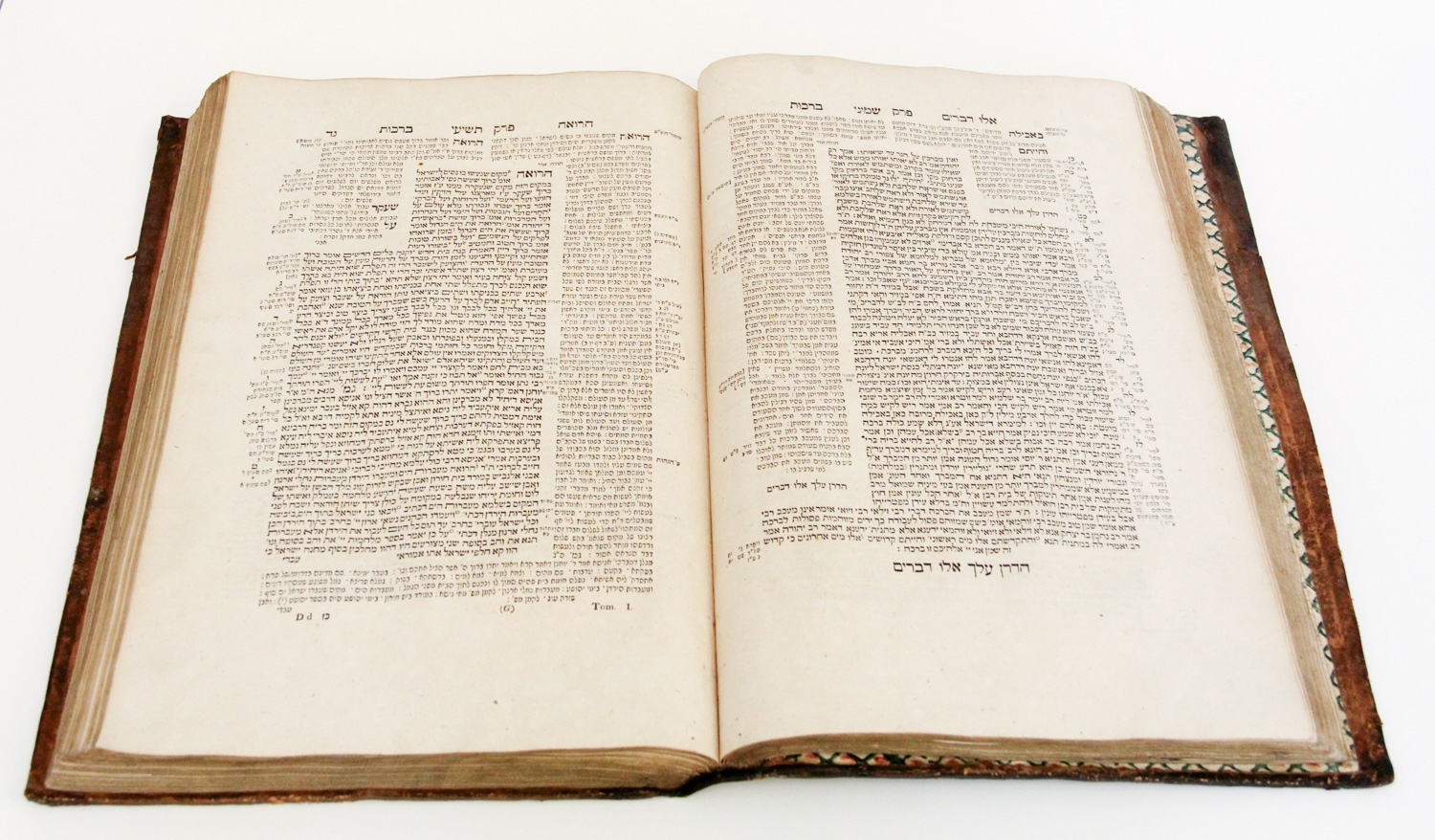2. Hall - 2. view
Talmud Bavli
Talmud Bavli (Babylonian Talmud), Brachot tractate. Together with the written Torah the oral laws of Judaism was also received, which were written down after the destruction of the Temple between 200-500 C.E. The Talmud is an encyclopaedia consisting of two parts: the Mishnah, and the Gemara, which has detailed explanations and discussions of the laws of Mishnah. The Gemara contains the teachings and opinions of more than three thousand scholars about the interpretation of the laws of the Torah. Mishnah is written in Hebrew, while the Gemara in Aramaic. The Talmud is not a code of law, but rather a case-book of law, where rabbis decide on the controversial issues, taking into account the typical cases. There are two versions of the Talmud: the Talmud Yerushalmi, edited in Jerusalem, and Talmud Bavli, edited in Babylonia. The Talmud Bavli was first printed between 1488 and 1519, while Yerushalmi was published in 1523. All releases of the Talmud are stereotyped, meaning that the same text is on the same page and line. Studying the Talmud has become a sacred duty of Jewish men, not just for rabbis and scholars, but for ordinary people as well. It also became a target for anti-Jewish movements: numerous fake translations appeared, resulting in burning and distructing those books. Vienna, 1808
